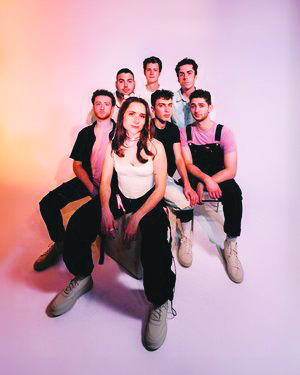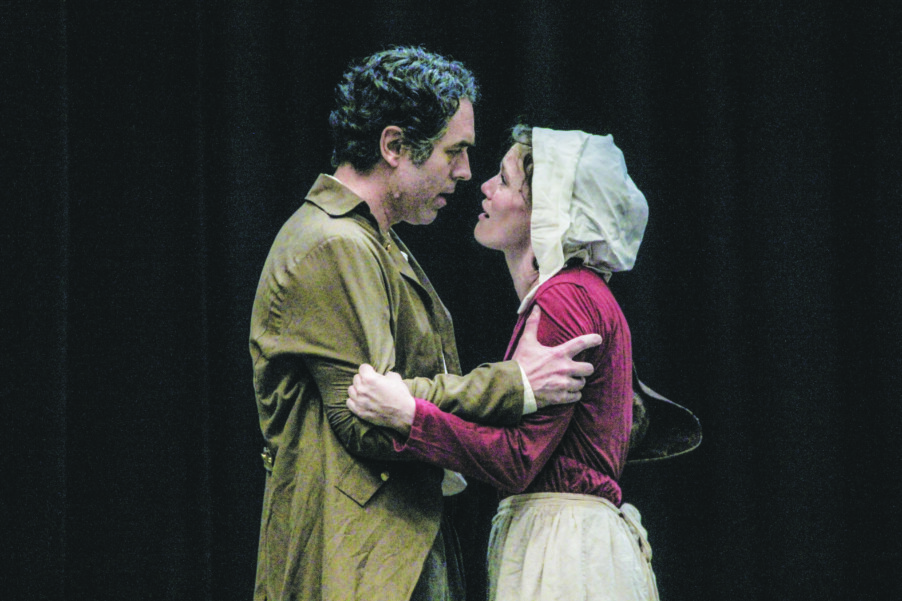Gibson’s Bookstore hosts climate crisis discussion
When Jon Waterman was growing up in the suburbs of 1970s Boston, he’d skip school and head for the White Mountains to hike and explore the world “above tree line.” It was a seminal experience that shaped his life. Eventually he worked for the Appalachian Mountain Club as a blanket packer and hut boy and finally became a caretaker for the organization.
“That was my first introduction to the Arctic,” he said of life in the Granite State’s high elevations during a recent phone interview. “Because that is an Arctic environment, not in terms of latitude but in terms of elevation. They have the same sorts of flora and fauna [that] I’ve seen in the far-off Alaska and Canadian Arctic.”
Along with studying authors like Edward Abbey and Rachel Carson, this led him to become a writer and photographer. He’s published several books; his latest is Into the Thaw: Witnessing Wonder Amid the Artic Climate Crisis. He’ll discuss it with fellow writer Richard Adams Carey on Oct. 21 at Gibson’s Bookstore in Concord.
The new book is due for official release in mid-November, but copies will be available for purchase at the event.
For Waterman, writing helped convey the feeling of being in the wild, and more. “It was not only the love of these places that drew me, but also an intense need to protect it, share its fragility,” he said. “I was very lucky … because I knew I was passionate about something at a young age, and I’ve stuck with it all my life.”
Into the Thaw chronicles a series of trips in the Far North taken over four decades, beginning with a seven-day journey in 1983 down the Noatak River. He went with Dave Buchanan, a ranger he’d known in New Hampshire. The book also has a brief and useful natural history of the region. Critically, he lists the alarming changes there over time and why they matter.
Some of the things accelerating the climate crisis are melting polar ice caps and thawing permafrost that’s causing ruptures called thermokarsts, along with the so-called “Greening of the Arctic.” Melting ice flowing into the Atlantic helps explain longer hurricane seasons, more severe wildfires and other natural catastrophes.
Thus, changes in the Arctic ripple across the rest of the planet, Waterman continued.
“They’re the world’s air conditioners,” he said. “I think it’s a nuance that’s hard for a lot of people to grasp because it has to do with ocean currents and air currents, but these polar vortexes we’ve been getting increasingly, these subzero air masses that are moving as far south as Georgia, they’re all about the air conditioner being broken.”
Of heightened concern to Waterman are the indigenous populations directly affected by climate change. “It’s the more than 60,000 people that live in the Alaskan Arctic that are going to be paying the most,” he said. “That’s true around the world, of course, not just the Inuit and the Inupiat, but people in the Philippines and low-lying islands. They’re suffering devastating floods in Pakistan and Afghanistan. Then there’s issues of food and agriculture.”
“It’s the indigenous people of the world that are really suffering the most,” Waterman said, adding, “What better way to bring it all home than a book that tells the plight of the Arctic people and what it means to them?”
In the final chapter of Into the Thaw, Waterman offers steps to make a difference. “The best way to be upbeat about it and hopeful, which I am, is to figure out ways that you can take action,” he said. “Thinking about where our food comes from, eating locally, rethinking things that cause emissions … not just to ease their conscience but to try to minimize impacts.”
He’s looking forward to discussing this with Carey, who’s written about indigenous life in Alaska and various threats to the world’s fishing industry. “Rick and I have never met, but we’re enjoying very fluid correspondence,” Waterman said. “I’m just honored to be able to be in a conversation with someone like him that actually has a grasp of these issues and what this culture is that I’m writing about.”
Into the Thaw: Witnessing Wonder Amid the Arctic Climate Crisis, with Jon Waterman
When: Monday, Oct. 21, 6:30 p.m.
Where: Gibson’s Bookstore, 45 Main St., Concord
More: gibsonsbookstore.com
Featured image: Thermokarst (caused by thawing permafrost) – from Into the Thaw Photo Credit: Chris Korbulic.




